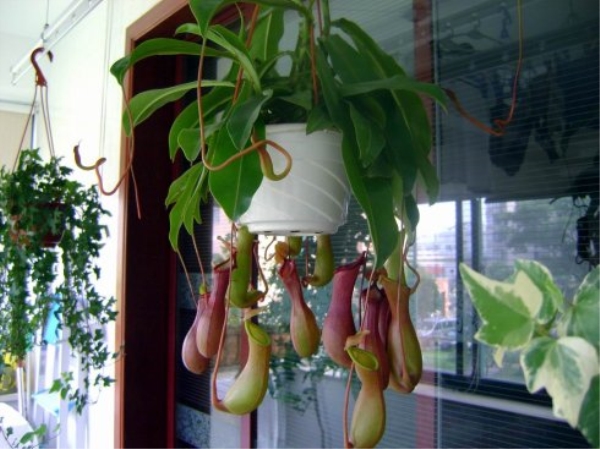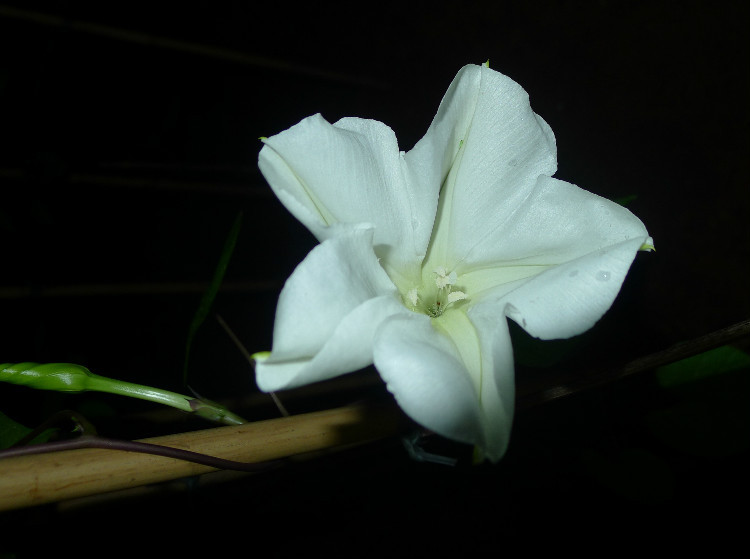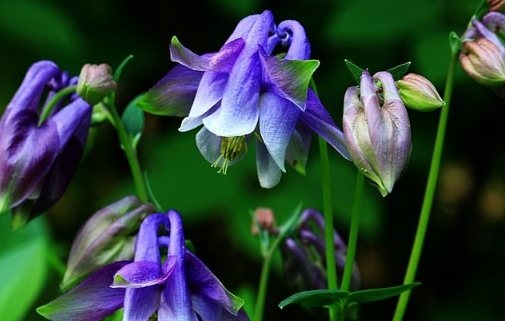Culture method of pitcher plant
Temperature
Pitcher plant is a tropical plant, like high temperature, not cold-resistant, the suitable temperature for its growth is 20 to 30 degrees. Pitcher plant is extremely cold-resistant, if the temperature is too low, it will stop growing, so in order to avoid pitcher plant freezing in winter, it is necessary to take protective measures to ensure that the indoor temperature is not lower than 10 ℃.

Light
Pitcher plants like light and can grow in the sun, but they are afraid of strong light. In the scorching summer, we should pay attention to sunscreen, avoid direct sunlight, the usual way is to build a shading net.
Watering
The growth of pitcher plant needs a lot of water, which is watered 2-3 times a day in summer with high temperature. Spray as much water as possible on the branches and leaves. When the temperature is low, the watering times should be reduced appropriately to keep the soil moist.
The above is about the price of pitcher plant introduction! The price of pitcher plant is not high, interested flower friends quickly plant a pot at home!
Maintenance methods of pitcher plants
In order to maintain a high degree of environmental wetness, in addition to watering and moisturizing, it is necessary to sprinkle or spray around it regularly or irregularly, even if it increases the wetness of the air, and the hotter the season, the more humid the environment will be. pitcher plants will be able to grow exuberantly and grow lovely pitcher sacs. Pitcher plants have a special demand for daylighting, like the environment with abundant light, and are afraid of direct light, but if the daylighting is insufficient, the plant growth is weak, the leaves and insect cysts become smaller, or even can not grow insect cysts. As for how much daylighting intensity is appropriate, there is a great difference between different species, which can be distinguished by the appearance of insect-catching sac in the process. The luster of insect cysts grown in strong light will turn red, while those in weak light will be dark green or dull in appearance, except for their slender appearance.
It is necessary to avoid strong light in summer, or shade with a sunshade net, or shelter from light, to prevent strong sunlight from burning leaves, and in autumn and winter, it is placed in a sunny place, which is conducive to the growth and development of leaf cages. Pitcher plants have strict requirements for fertilizer, and it is appropriate to apply light organic liquid fertilizer or commercial liquid fertilizer with high dilution ratio once or twice a month during the period from late spring to mid-autumn every year. Aolu manure, Huabao, Shida, Duomu, Xishuo and so on all have good results. It is not good to apply too much or too little fertilizer. If there is insufficient fertilization and lack of vitamins, the insect sac of the light person is both small and small, and the color is dark, the reward value is reduced, and in serious cases, the insect sac can not grow and lose the indecent reward value. However, if the fertilizer is too much, the plants will be fluffy and fluffy, and it is easy to appear the signs of catching insect sacs soon because of too many nutrients. Because in the wild in nature, the purpose of pitcher plant breeding pitcher cysts is to hunt fallen insects and decompose them into nutrients needed for growth.
Note the following six points:
First: pitcher plants like the environment with high humidity and bright light, if your environment is too dry or too ventilated, it may not be easy to close the cage.
Second: pitcher plants should be watered every day, do not let the medium too dry, it is not recommended that you use "waist water" ("waist water" is to put a tray, in which the water has been soaked in the basin), because the waist water medium is easy to rot and become airtight.
Third: do not let the pitcher plant cage dry, if the digestive juice in the cage is dry, you can pour some water into it, the water level can reach 1/3 of the cage, the cage is less likely to wither when there is water in the cage.
Fourth: if the weather is very hot, it is best to spray water to cool it at night. A larger temperature difference between day and night seems to be beneficial to the growth of pitcher plants.
Fifth: do not often change your pitcher plant environment, even if your current environment is not very ideal, as long as patiently wait for it to adapt to the surrounding environment will continue to end.
Sixth: you can spray leaf fertilizer on pitcher plants every two or three weeks, but don't put solid fertilizer into the basin.
The maintenance method of pitcher plant in order to maintain a high degree of environmental wetness, in addition to watering and moisturizing, but also regularly or irregularly sprinkle or spray around it, even if it increases the wetness of the air, and the more hot the season, the more humid the environment, the pitcher plant will be able to exuberant growth, and grow lovely pitcher sac. Pitcher plants have a special demand for daylighting, like the environment with abundant light, and are afraid of direct light, but if the daylighting is insufficient, the plant growth is weak, the leaves and insect cysts become smaller, or even can not grow insect cysts. As for how much daylighting intensity is appropriate, there is a great difference between different species, which can be distinguished by the appearance of insect-catching sac in the process. The luster of insect cysts grown in strong light will turn red, while those in weak light will be dark green or dull in appearance, except for their slender appearance. It is necessary to avoid strong light in summer, or shade with a sunshade net, or shelter from light, to prevent strong sunlight from burning leaves, and in autumn and winter, it is placed in a sunny place, which is conducive to the growth and development of leaf cages. Pitcher plants have strict requirements for fertilizer, and it is appropriate to apply light organic liquid fertilizer or commercial liquid fertilizer with high dilution ratio once or twice a month during the period from late spring to mid-autumn every year. Aolu manure, Huabao, Shida, Duomu, Xishuo and so on all have good results. It is not good to apply too much or too little fertilizer. If there is insufficient fertilization and lack of vitamins, the insect sac of the light person is both small and small, and the color is dark, the reward value is reduced, and in serious cases, the insect sac can not grow and lose the indecent reward value. However, if the fertilizer is too much, the plants will be fluffy and fluffy, and it is easy to appear the signs of catching insect sacs soon because of too many nutrients. Because in the wild in nature, the purpose of pitcher plant breeding pitcher cysts is to hunt fallen insects and decompose them into nutrients needed for growth. Pay attention to the following six points: first: pitcher plants like the environment with high humidity and bright light, if your environment is too dry or too ventilated, it may not be easy to close the cage. Second: pitcher plants should be watered every day, do not let the medium too dry, it is not recommended that you use "waist water" ("waist water" is to put a tray, in which the water has been soaked in the basin), because the waist water medium is easy to rot and become airtight. Third: do not let the pitcher plant cage dry, if the digestive juice in the cage is dry, you can pour some water into it, the water level can reach 1/3 of the cage, the cage is less likely to wither when there is water in the cage. Fourth: if the weather is very hot, it is best to spray water to cool it at night. A larger temperature difference between day and night seems to be beneficial to the growth of pitcher plants. Fifth: do not often change your pitcher plant environment, even if your current environment is not very ideal, as long as patiently wait for it to adapt to the surrounding environment will continue to end. Sixth: you can spray leaf fertilizer on pitcher plants every two or three weeks, but do not put solid fertilizer into the basin through the detailed introduction of this article. I hope you can get something! Welcome to continue to follow Zuihua Network and learn more about the latest information about insectivorous plants!
- Prev

The propagation method of Moonflower
Moonflower has two propagation methods: sowing and transplanting. The main method of reproduction is seeding reproduction, this method has a high survival rate and high feasibility, so people have always chosen the method of seed sowing as long as it is to reproduce moonlight flowers.
- Next

Matters needing attention in the culture of Rabdosia angustifolia
Diseases and insect pests the main pest is aphids, the harm is relatively great, it will also cause mosaic disease, in addition, there is the harm of powdery mildew, which needs timely and reasonable treatment. The above is an introduction to the content of Douzi. I hope this article can help the flower friends who are breeding it.
Related
- Fuxing push coffee new agricultural production and marketing class: lack of small-scale processing plants
- Jujube rice field leisure farm deep ploughing Yilan for five years to create a space for organic food and play
- Nongyu Farm-A trial of organic papaya for brave women with advanced technology
- Four points for attention in the prevention and control of diseases and insect pests of edible fungi
- How to add nutrient solution to Edible Fungi
- Is there any good way to control edible fungus mites?
- Open Inoculation Technology of Edible Fungi
- Is there any clever way to use fertilizer for edible fungus in winter?
- What agents are used to kill the pathogens of edible fungi in the mushroom shed?
- Rapid drying of Edible Fungi

